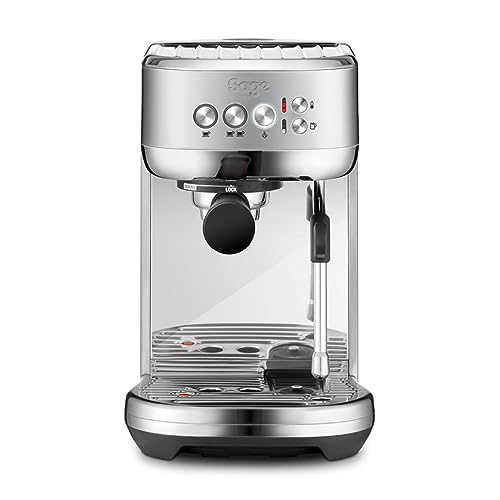How Does Machine Espresso Work?
Machine espresso employs precise pressure and amazing filter technology to make the coffee we love. But how exactly does it work?
Espresso is made by forcing hot water at high pressure through finely ground coffee. The process is similar to that of making drip coffee. However the pressure is the primary difference.
The Group Head
The group head is the portafilter you place in the espresso maker when making it. It disperses the water into the portafilter, and then regulates the pressure of the extraction. There are numerous kinds of group heads each with distinct advantages and drawbacks. Some are designed to provide stability in temperature, while others are built to handle pre-infusion. Some are designed to control the lever. Some are a combination, such as the E61. This is a favorite among baristas due to the fact that it has multiple benefits in a single package.
As you can see in the above photo the head of the group is fitted with a variety of notches. The portafilter is placed in these notches and then twist the head to secure it. A gasket made of rubber is positioned inside the notches to help make a seal when you insert your portafilter. The notches on the head permit an exact position of the portafilter which is vital for an efficient extraction.
In addition to allowing you to easily connect your portafilter, the group head is also responsible for maintaining a consistent temperature. This is accomplished by cycling hot water around the portafilter, and through the brew-basket, ensuring the temperature is always right to extract the coffee. This is crucial, since just a few degrees could be the difference between a good and excellent espresso.
The Pump
In contrast to manual piston machines which use a lever to pressurize water, rotary espresso machines rely on motorized pumps to provide the nine atmospheric bars of pressure required for espresso extraction. This pressure builds up by removing tap water from a reservoir and pumping it through a heat exchanger prior to being shot through the ground coffee in the group head.
Pumps are typically cheaper and last longer than piston-driven machines. However, both kinds of machines can degrade due to overuse and insufficient cleaning. They also add mechanical complexity and can lead to the cost of even the most basic models.
Some espresso machines remove the pump completely and use steam pressure to brew espresso. The drawback is that the boiler that produces steam also increases the temperature of the water to boiling which can cause excessive extraction. Additionally these machines are often required to rebuild their pressure between cups, which takes time and energy.
A majority of espresso machines utilize either a vibration or rotary pump. A vibration model employs the vibrating disk to create pressure, while the Rotary model pushes hot coffee through the ground at a rapid speed. Both types of machines can make excellent espresso, however the rotary models are quieter and more durable than vibration pumps.
The Boiler
The boiler is the part that heats water to an optimal temperature to extract. The steam that is created reaches the portafilter, which is a container for espresso grounds. It is then funneled into the cup. During this process the steam creates enough pressure to push the coffee grounds through. This creates a crema on the top of the espresso. This is one of the hallmarks of a great espresso.
There are three kinds of espresso makers. They differ in the type of pump they use and how hot the espresso is. There are a variety of ways to control the amount of brew, as well as the size of cup that can be made by the machine.
The earliest espresso machines were steam types. The earliest espresso machines were steam types. This led to the coffee tasting burnt and bitter. This is the reason why Milanese producers Luigi Bezzerra and Desiderio Pavoni created the modern espresso machine.
The most commonly used espresso machine is a semiautomatic one with an electric pump. This is what people envision when they think of an espresso maker. With a semi-automatic espresso machine, you have to grind the beans and then tamp them by hand, but the pump controls the flow of water and pressure. This is a great combination of human control and mechanized reliability.
The Filter
Espresso machines usually have filters that separate the grounds of the coffee from the hot water. The filter is also a vital element of the temperature control system, since it helps prevent the machine from overheating.
espresso machine uk can also help with flavor since it allows for an extended flowering time. This lets the beans let their nuances out, and allows for better extraction.
It is important to remember that even the most efficient filter can result in a bad cup of coffee. The quality of the beans and the extraction process remain vital.
It's here that the magic takes place. This is what makes espresso taste so delicious. The grouphead, often called the brewhead, is where the portafilter (the container you place the ground coffee in) is placed when you're making espresso.
Steam-driven espresso machines use hot water that is heated in an airtight vessel to create steam. The steam then pushes hot water through grounds of coffee under high pressure. These kinds of machines are usually cheaper and easier to maintain than pumps-driven models. However, they are limited in their ability to provide the perfect brewing conditions because they operate at 1-1.5 bars of pressure. The perfect shot requires 9-10 bars.
In recent years, espresso machines powered by compressed air-pump have become increasingly popular. They use an air compressor to push hot water through the grounds and are much more portable than steam-driven electric machines.

